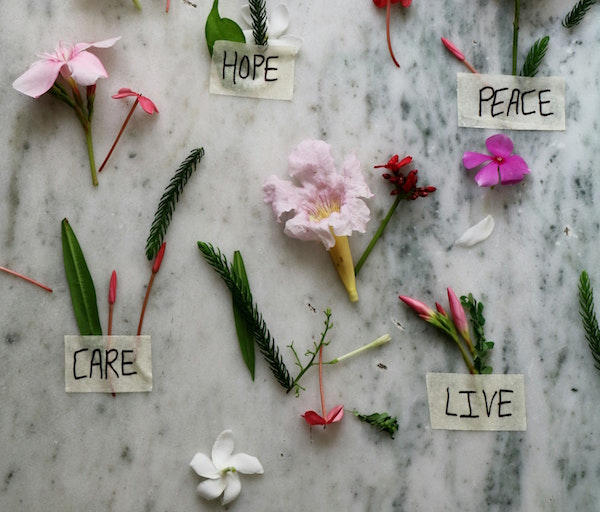We’ve all heard the quote, ‘culture eats strategy for breakfast’. But when you stop to look at it properly, culture needs to be strategic. Strategy is the theory; culture is the practice. And to be blunt, strategy is usually the result of management sitting in a room for 16 hours, while culture is the inspiration for employees to live it.
I sit in the middle of the field as a senior creative. I’m susceptible to agency culture, but I’m also a part of the strategic build from the top down. In the three years I’ve been at Riverbed, our true north star had been what we called the Greater Good. And I know it’s been around since inception, because I’ve seen the old pitch decks and case studies.
Back then, it was all about doing as much as we could to impact our communities for the better. It was simple. But it wasn’t terribly clear. We aimed towards it, but it sat on a separate page, an addendum to our achievements and work, and to who we were as an agency.
In early 2020, our leadership team got together and hashed it out. What is this thing we have? This desire to do good? That session resulted in a concept: The Care Principle within the framework of care culture, driven by deep empathy and whole idea thinking.
I remember when they presented the strategy to us. This is what excited me: “At Riverbed we understand the power of the act of caring: that if you are brave, believe, work hard and truly give a damn, magic happens. Our response is Care Culture: a set of values, behaviours and ways of working that ensure the work we produce WORKS uniquely. By our standards that means it resonates deeply with South Africans, belongs in their world and is measurably effective.”
I mean, come on! Who wouldn’t want to rally behind that with stilettoes, sequence and a vuvuzela? Well, that’s how I felt, anyway.
But I still wasn’t all that sure what it meant for me. I hadn’t yet made the connection between me as a person, me as a creative, me as an employee at Riverbed, and the agency itself. It felt like it was still just a strategy.
Oddly, it took a global pandemic to help us pull this idea more clearly into focus.
Like all businesses, we were hit hard by 2020. Those first few months were a real dark night of the soul. As we all scrambled to adjust and to get work out in the chaos, we began to reassess our lives as people. What was important to us? How did we want to spend our time? Where did we want to direct our effort?
Then, in the leadup to Worker’s Day, we put our heads together for a way to make a real difference for small businesses, who were at that point going through extremely trying times. It was the first time we really focused on our care culture. The deep empathy was there, as was the drive to do good and make a difference. My art director and I shared an idea that had been percolating since our time working on FNB Business. Why didn’t we just do what we do best and make some ads for these guys? And so that’s what we did.
The result was an initiative that we’re all truly proud of. Through Ad Crashers, we produced 9 TTL campaigns for nine small businesses. Totally free of charge. In our own time. It was an idea that came out of empathy, expressed because we felt safe to be vulnerable with our ideas, and our leadership cared enough to make it happen.
It was pretty clear that we, as a collective, were passionate about people. About helping people. About giving our time to making things better in some way. This was a collective thing – a start of a group identity. The start of a culture.
As I was planning how I was going to express all this in words, I happened to hear this quote in my audiobook:
“Strategy is empty without change, empty without passion, and empty without people willing to confront the void.” ~ Seth Godin, The Icarus Deception
Which reminded me of another great quote (also an audiobook – I’m lazy like that):
“If we want people to fully show up, to bring their whole selves including their unarmored, whole hearts—so that we can innovate, solve problems, and serve people—we have to be vigilant about creating a culture in which people feel safe, seen, heard, and respected.” Brené Brown, Daring Greatly
We need people who are passionate and willing to face the void, but for that to happen we need to create a space where people feel safe enough to be vulnerable. That’s where our care culture happens.
Basically, it was up to me to show up, be brave, dare to push into uncomfortable places to reflect the care culture words that so inspired me. It was up to me, as an individual, to stand up for my colleagues when they needed me to, to create a safe space for ideas to grow, to make empathy and care my true north star in everything I do. And when someone “knocks over the sacred cows” (another Brené Brown quote), I need to be one of the people who picks them back up.
When I think of our people, every single one cares. They care about each other, their communities, about children, about customers they’ve never met, and of course, they care about our clients. But do they get this whole care culture thing? I decided to ask them directly. Here are just a few of the responses:
“It’s the way that we care for one another whenever one is having bad times, collectively heartfelt and sincere condolences. Sometimes the way we communicate to one another in a way that will benefit all parties. And it also means the way we care for our client’s needs, like customer care support when handling their briefs or presenting to them.”
“Respect for each other and for the work that we produce – both individually and as a team.”
“Having an understanding of your role and how your role enables others to do theirs optimally. For our clients it means teams that are committed to understanding their problems (pain points), their customers and what will make people give a damn.”
The rest are in the same vein. Let’s just say the words “give a damn” came up a few times.
The work we’ve done for Nedbank, Supa Quick and aware.org are just a few proof points of using empathy to develop whole idea thinking. The work emerges out of the care our teams have for the people within the consumer context – and I’m not just talking about the creatives.
We immerse ourselves in the research so that we can connect on an emotional level. Together, we are able to paint a more complete picture of the context. We connect to it. Then we have the platform to express these ideas without fear. Okay, I still get a bit scared when we present a big idea to a client, but discomfort is a sign of growth, right?
My point is, that the strategy was built around the people we already are. It just creates a framework for us to grow our identity around. And once the identity is made, culture begins to grow.
I don’t believe our care culture will ever be complete. It will always weave and flow with the minds and hearts of the people within it. And if we can inspire each other’s hearts and minds to weave and flow within the rhythm of our strategy, we’ll keep making magic.

Sonya Oelschig has served as a senior copywriter at the Riverbed Agency for the past three years and considers herself a custodian of the agency’s Care Culture. She is part of the integrated creative team that develops whole ideas for clients such as Nedbank, aware.org, CCBSA and the South African Future Trust.














